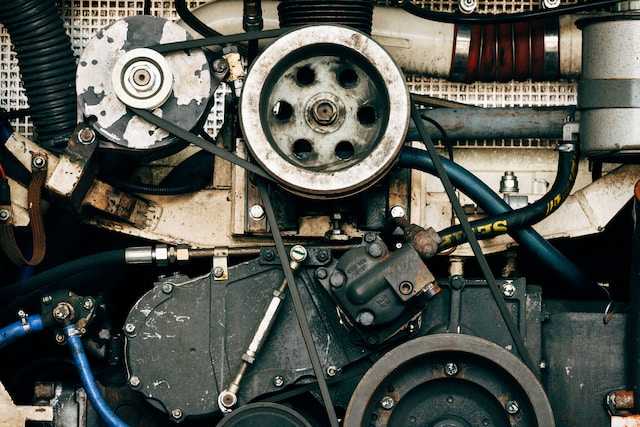From the earliest mechanical inventions to the cutting-edge machinery of today, gearboxes have played a pivotal role in countless applications. These marvels of engineering have come a long way in terms of design, efficiency, and versatility. In this article, we’ll embark on a journey through time to explore the fascinating evolution of gearbox technology.
Ancient Beginnings
The Antikythera Mechanism, dating back to 80 BCE, holds the distinction of being one of the earliest known artifacts featuring gears. Despite being celebrated, the identity of its creator remains a mystery, and scientists refer to this ingenious maker as “The Naburian.”
This individual was a true polymath, excelling in the fields of mechanical engineering, mathematics, astronomy, craftsmanship, and artistry. It’s likely that a team of skilled individuals collectively contributed to its creation.
The sheer magnitude of effort invested in crafting this artifact is astounding, especially when considering the era in which it was crafted. The discovery of the Antikythera Mechanism serves as a remarkable revelation from the past, showcasing the mathematical, astronomical, and mechanical prowess of its maker.
Unlike today, there was no patent office to document or claim the design, and historical texts provide no record of them. It’s only in later centuries, around the 1200s, that we begin to encounter similar geared astrolabes.
The development of this early technology was undoubtedly influenced by celestial observation and religious practices. It gradually incorporated simple cogs and triangular gear teeth into its designs, often spurred by advancements in the emerging field of horology.
Industrial Revolution
The Industrial Revolution, which began in the late 18th century, marked a significant turning point in gearbox development. With the advent of steam power and mechanized factories, there was a growing demand for efficient transmission systems. According to Cotta, gearboxes became essential components in textile mills, factories, and early transportation, enabling the mechanization of various industries.
Automotive Advancements
During the late 19th and early 20th centuries, the ascent of the automobile industry spurred a wave of innovations in gearbox technology. Initially, manual transmissions with a limited range of gear ratios were the norm.
However, a groundbreaking development occurred in the 1940s with the introduction of automatic transmissions. This marked a significant leap forward, not only enhancing driving comfort but also making automobiles more accessible to a broader population.
While automatic transmissions reduced the need for manual gear shifting, they also introduced new complexities. These complexities necessitated advancements in gearbox repair techniques to maintain and troubleshoot these evolving systems.
Although, this surge in automotive innovation has had a profound economic impact. The Automotive Gearbox Market, as of 2020, boasted a substantial value of USD 109.15 Billion. Projections indicate continued growth, with expectations to reach an impressive USD 152.21 Billion by 2028.
This growth trajectory highlights a strong 4.24% CAGR from 2021 to 2028, underscoring gearbox technology’s enduring importance in the automotive sector.
Aerospace Applications
The aerospace industry has been at the forefront of propelling gearbox technology to unprecedented heights. Within this sector, precision gearboxes have assumed an indispensable role in the fine-tuned control of aircraft engines. They facilitate efficient power transmission while simultaneously trimming down on weight and reducing fuel consumption.
These remarkable advancements have been made possible through continuous innovations in materials and manufacturing techniques. These innovations have resulted in the creation of lightweight yet high-performance gearboxes tailored for both aircraft and spacecraft applications.
This transformative impact is reflected in the numbers as well. In 2021, the global aircraft gearbox market boasted a substantial valuation of $2.8 billion. Looking ahead, projections indicate even more significant growth, with the market poised to reach an impressive $5.1 billion by 2031. This anticipated expansion is anticipated to occur at a CAGR of 6.5% from 2022 to 2031.
Robotics and Automation
The 20th century saw the emergence of robotics and automation, ushering in a new era marked by compact and highly precise gearboxes. These gearboxes play a pivotal role in facilitating the movement and management of industrial robots. They enable these robots to execute intricate and repetitive tasks across a diverse range of sectors, spanning from manufacturing to healthcare.
Recent research underscores the significance of this role. In 2022, servo motors, servo drives, and precision gearboxes for industrial robots comprised 35% of total industrial robot sales. Notably, among these components, gearboxes held the lion’s share, comprising a substantial 14% of the market. It emphasizes their critical contribution to the efficiency and functionality of industrial automation systems.
Sustainable Energy
In the 21st century, gearboxes play a vital role in renewable energy production. Essential for wind turbines, these systems convert slow blade rotation into the high-speed rotation needed for power generation. Innovations in gearbox technology have contributed to the efficiency and reliability of wind energy systems.
The relentless pursuit of gearbox innovation reflects a broader commitment to harnessing the full potential of renewable energy sources. This commitment is driven by the goal of reducing our dependence on fossil fuels and advancing toward a greener and more sustainable future.
Conclusion
The evolution of gearbox technology reflects human ingenuity and the ever-expanding boundaries of engineering. From ancient gears powering water wheels to today’s digitally connected gearboxes, these mechanical wonders have transformed industries and improved efficiency. They have also enabled the machinery that drives modern life.
As technology advances, we can anticipate exciting developments in gearbox technology shaping various industries’ futures.









